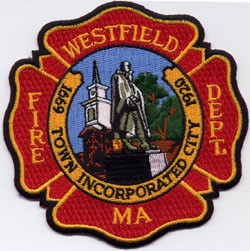By Tina Gorman, Executive Director Westfield Council On Aging
“9-1-1. What is the address of your emergency?” It is not unusual for older adults to require the services of firefighters, paramedics, or police officers. City residents should remember that in an emergency, seconds count. The faster that emergency personnel can get to the scene and assess the situation properly, the more likely that a life can be saved or a disaster averted.
Massachusetts law requires that every building in the Commonwealth, including homes, apartments, condominiums, and businesses have a number affixed to the building. The number must be large enough and situated on the building so that, to the extent practicable, it is visible from the nearest street or road providing vehicular access to the building. Addresses are entered into the electronic database for use in enhanced 9-1-1 service.
House numbers need to be at least four inches in height and facing the street. The numbers should be situated under lighting and contrast with the background of the house so that they are visible at night. If the house numbers are obstructed by trees, bushes, flags, or decorative ornaments, they will not be seen by emergency personnel. In addition, numbers on the mailbox must be visible from both directions.
Script numbers or numbers that are spelled out in words may be aesthetically pleasing, but are difficult to read quickly from the street. Brass or bronze numbers are also difficult to see. Numbers that provide a color contrast with the background of the house and are located on, above, or at the side of the main entrance will be most visible from the street. Numbers placed in an obscure area in the yard, for instance on a decorative rock, will probably go unnoticed by emergency personnel.
Often when a house has been repainted or resided, the owner fails to put the numbers back on the house. It may be necessary to purchase new numbers if the color contrasting has changed and the old numbers are no longer visible.
In a crisis, the injured person, a visitor, or a grandchild may be unable to provide clear directions. Emergency personnel from a neighboring community may be unfamiliar with the targeted destination. Precious time is lost if firefighters, paramedics, or police officers drive right by the house because it is not clearly identified.
Once the house has been located by emergency personnel, it is necessary to have a clear pathway into the home as well as to the location of the victim. In the winter, sidewalks should be free of snow and ice. All doorways, hallways, and stairs should be free of clutter so that first responders can get to the victim quickly. Objects can become major obstacles in an emergency.
Emergency personnel can treat victims most effectively if they have some basic information about the person. It is helpful for first responders to know if the person in distress has a dementia diagnosis, memory loss, or cognitive limitations as well as hearing, visual, or mobility challenges. The First Responder Informative Extra Needs Directive or FRIEND form provides valuable information to first responders about the person in need, prior to arriving on the scene. Once completed, information from the FRIEND form is entered into the Westfield 9-1-1 dispatch system. FRIEND forms are available at the Westfield Senior Center. For those who would like assistance completing the forms, COA staff members are available to help.
Remember that in an emergency, seconds count. Emergency personnel can only be effective, if they can reach those in need and have some basic information in order to help. Factors such as darkness and poor weather conditions cannot be controlled. But preparing ahead of time with visible house numbers, a clear pathway for first responders, and vital information in the City’s 9-1-1 system can easily be done, and may be the difference between life and death.





